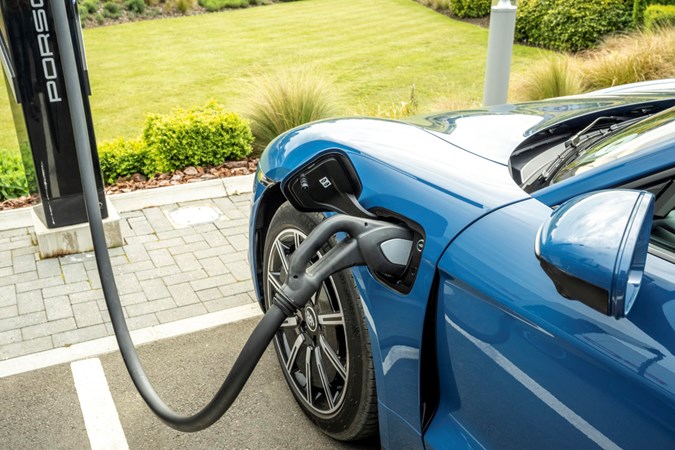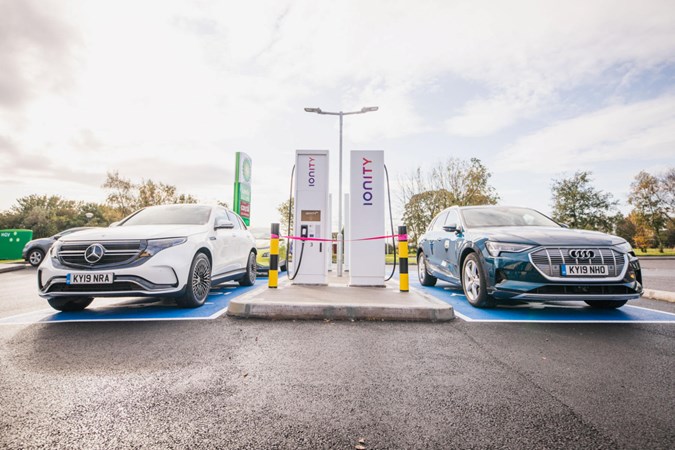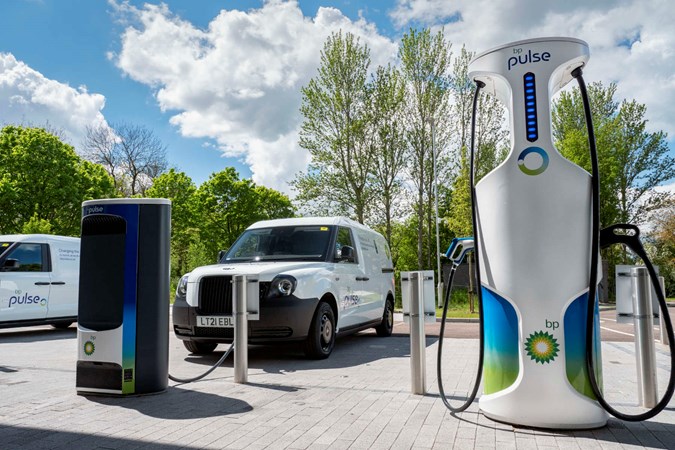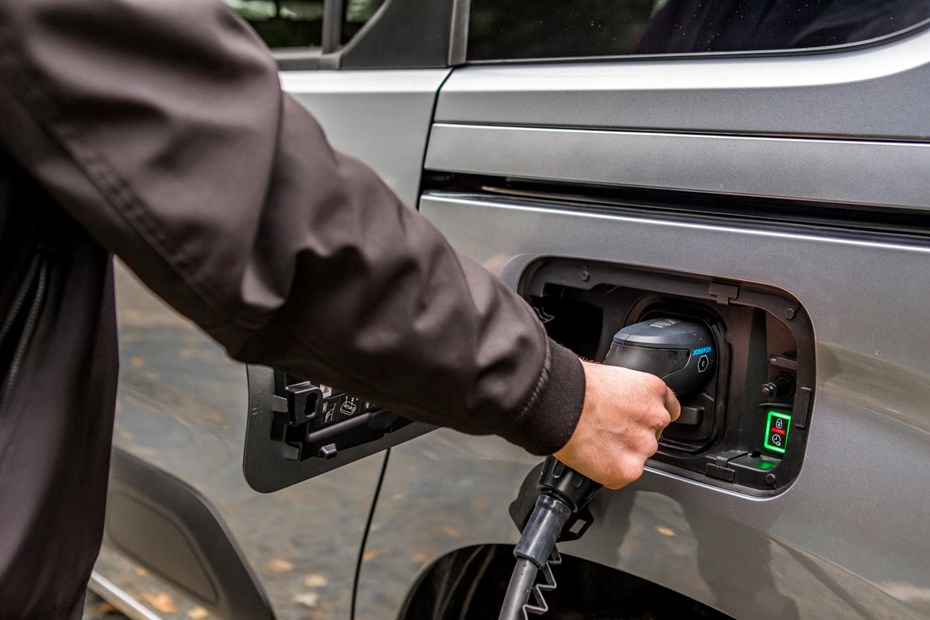One of the biggest questions drivers have when considering switching from conventional cars to electric cars is how long to charge an electric car really takes. While EVs can seem like an appealing solution for those looking to reduce their carbon emissions, the trade-off is the greater amount of time spent charging the car.
Answering the question of how long it takes to charge an electric car isn’t as straightforward as one might think, though. This is because a clear answer depends on the size of the car’s battery, the choice of chargepoint used and the car’s capacity to receive a charge.
Let’s look at the factors involved in EV charging:
- The size of the car battery
- The choice of charge point used
- The car’s capacity to receive a charge
- Other factors to consider
The bigger the battery, the more charge it holds
Back when the Nissan Leaf first hit our roads, its battery capacity was a tiny 24 kilowatt-hours (kWh). The latest Nissan Leaf e+ features a 62kWh battery and that bigger battery has more than doubled the expected mileage of the vehicle.
The Porsche Taycan Turbo S (below) – considered one of the most impressive all-electric performance vehicles – has a 93.4kWh battery, pipped only by the Long Range variants of the Tesla Model X and Tesla Model S as well as the Mercedes-Benz EQS. These pure-electric premium vehicles offer around 400 miles on a full charge.

A bigger battery could mean a longer charge
On a standard AC charger, a bigger battery will take longer to charge. Alternating current (AC) is the way all energy is delivered out of sockets in our homes. Yet, batteries, whether they’re the ones for your telly remote or your electric car, can only store direct current (DC).
This scientific conundrum is one of the challenges that EV manufacturers have faced. Every electric car has to have an AC-to-DC converter onboard, which limits the speed at which the charge can happen.
The good news is, newer smart charging points have off-board converters, operating at a higher rate of conversion, and can deliver a faster charge. Think of it like a garden watering hose; the size of the pipe and the pressure of the water are both factors in how quickly you could fill a paddling pool.
While 3kW and 5kW slow chargers are barely worth mentioning—consider, a toy water pistol effort taking forever to fill a cup, never mind a pool – 7kW and 22kW ‘fast’ chargers are the standard types you’ll find installed at home, workplaces, supermarkets, shopping malls, libraries, pubs and gyms. These ‘destination chargers’ offer maximum 230V charges.
There is also the option of hooking your car up to a portable EV charger, which should be good for digging you out of a hole by hooking up to a power bank of (more likely) a three-pin domestic socket.
Fast chargers are found where people spend time. This ‘dwell-time’ is anything between 40 minutes (a haircut) to eight hours (a work shift). A vehicle can get approximately 50 miles of charge back into the battery for every hour at a fast charger. That might not sound a lot, but that’s a good thing. Charging batteries involves chemistry that prefers a slower rate. In doing so, the battery life is protected and the heat energy created during charge is minimised.
Will it take less time with more powerful charge point?
The type of charge point can be a factor, yes. If we adopt the same hose/paddling pool analogy again, Ionity’s 350kW DC chargers are like the fireman’s hose of the electric charging world with their potential 800V delivery. Bear in mind, however, there’s not enough of them in the whole UK right now. In the new Hyundai Ioniq 5, 800V will put 90 miles of range back into the car in five minutes – a brief stop for the loo and a take-away cuppa.
More commonly, EV drivers use ‘rapid’ chargers, found at service stations and Tesla Supercharger bays. These 50kW, 100kW and 150kW points can offer as much as 400V delivery. Here you’ll gain around 100+ miles of charge while you have lunch. Taking anywhere between 20-40 minutes, your battery’s progress will depend on which charger is available when you rock up.
However, not all EVs are capable of receiving such powerful charges. If you try to connect to a faster charge point than your car is able to take delivery from, the car will limit the charge delivery to its maximum and the charge time will be longer.

Home charging
EV drivers tend to charge overnight at home on their 7kW points. As mentioned, this even slower charging helps protect the longevity of the batteries. It also manages a more gradual drawdown from the National Grid.
Rarely does a car need to be plugged in all night, so manufacturers’ smartphone apps enable you to schedule the charging times on your smartphone to start and finish when energy rates are cheapest.
How much is it to charge an electric car?
Rates vary from 70p/kWh with 800V chargers to 35-37p/kWh with 400V chargers and a more reasonable 25-30p/kWh for fast chargers. Can you charge an electric car at home, and is it more effective? It is, and with rates from as little as 17p/kWh, you’ll want to do as much of your charging at home as possible.
While the recent rise in energy costs has been reflected in the pricing for EV charging, it’ll still tend to be much cheaper than fuel. While the amount of real-world range you’ll get from your EV will depend on how you drive, the weather conditions and what features you use in the car, running an EV will, mile-for-mile, be cheaper than running a conventional car.
Key EV charging point networks are BP Pulse, Chargeyourcar, Shell, Instavolt, FastNed, Ionity, Ecotricity, Geniepoint, Gridserve and Pod-Point, to name but a few. For the smoothest EV charging experience, find out which provider is most common in your area, download the app and subscribe to their services for discounted rates on charging. Consider downloading the Zap-Map app, as Zap-Pay makes it easy to pay for all the other providers from one place.

Summary
To answer the original question, how long is a piece of string. As a rule of thumb, the smaller the battery size, the more quickly it will top up, especially on a slow home charger putting out 7kW. So, take a typical electric family car, such as a Vauxhall Mokka Electric, with a 50kWh power pack, it will recharge from empty to full in eight hours.
Something bigger like a Skoda Enyaq iV with a 77kWh battery pack, and that time rises to eleven hours – again, from empty to full.
However, it’s a different story on public chargers. With the slow roll-out of super-fast rapid chargers, the capacity of the car’s onboard charger becomes more significant. But the easiest way of thinking of it is that your Vauxhall Mokka Electric will take around 40 minutes to go from 20-80% on an public rapid charger.
A slower (but still quickish) top-up on a fast charger will typically take 1hr 30mins for the same 20-80% recharge. Think quicker for cars with faster on-board charging capacity and smaller battery packs. Think slower for larger-battery cars or older vehicles with slower on-board charging capacity.
The future of electric vehicle charging
The future is exciting. Battery technology development is making batteries smaller and more efficient. Static wireless charging is removing the need for cables and dynamic wireless charging could see our roads become Scalextric-style routes – great for taxi drivers.











